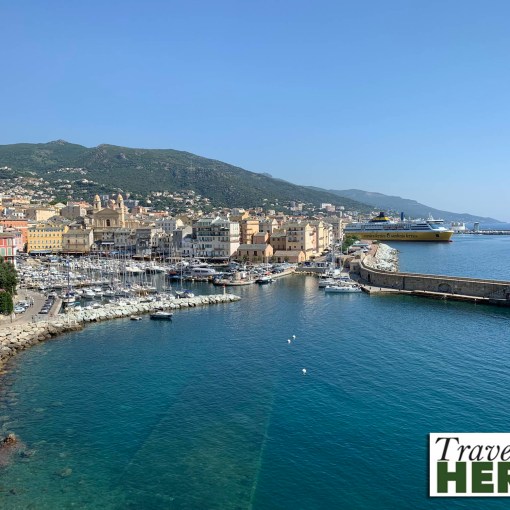Friday 5th July 2019
The original plan for the journey to Bonifacio was for us to make a three hour journey by bus, changing at Scopetto. However, the time spent rehydrating around marinas on this trip had proved inspirational for Robert and he had discovered we could catch a tourist boat to Bonifacio. This revised route would only take an extra half hour and would include views of the city from the sea and take in various significant geological features on the way, which appealed to the geography graduate in him.
Having bought the boat tickets on our first night in Ajaccio Robert did not inspect them until we were waiting on the quay to board the boat only to discover that the tickets had been issued for the day we arrived in Ajaccio two days earlier on 3 July. Fortunately the ticket office opened at about 07:30 and Robert was able to go and point out the error – the credit card receipt proved that we had in fact purchased our tickets long after the boat we were booked on had already sailed.
Travelling by boat to Bonifacio was a real treat. The route hugs the coastline past successive rocky promontories topped by individual castellated towers reminiscent of traditional castle chess pieces. We can only assume these were part of a now disused warning, defence and communication system.
At one point the engines slowed, people crowded to the side and we were privileged and delighted to see two dolphins, following the ship, skimming the surface and playing in the waves created by the wake on an otherwise almost completely calm sea. Check out Video of the day, below, for the dolphins and more.
Unfortunately the commentary on the boat was entirely in French and although we understood some of it, the finer points were lost on us. But with a little help from the guide book, we gleaned that the coastline and beautiful soaring cliffs around Bonifacio are part of a chalk outcrop in a predominantly volcanic landscape. The attractive layers in the sedimentary rock also look rather fragile and from the sea, it seems as though, in some places, there is very little left holding Bonifacio aloft.
The Cave of St-Antoine for example is immediately below the southernmost point of Corsica and its triangular shape has earned it the nickname of “Napoléon’s Hat”.

We slowed to allow time to admire and photograph a famous stack which broke off from the cliff about 800 years ago and which has been nicknamed “Grain de Sable” or the grain of sand, though it is quite large – see Video of the day.
Also visible from the sea is the Escalier du Roi d’Aragon or the King of Aragon’s Stairway named for Alphonse V, the king whose troops were besieging the city in 1420. A total of 189 steps cover the 65 meters from the city to the sea and a natural grotto and subterranean pool fed by rain water. According to legend the King of Aragon’s soldiers hewed the steps out of the stone by hand overnight in one last, doomed attempt to conquer the city. In reality a sign says that the rift in the rock has been developed and improved since prehistoric times to allow access to the fresh water source below.

Matilda was adamant that the view from the sea was perfect and that she did not need to go down only to have to walk back up the 189 steps again in 30 degree heat.
The Grotte du Sdragonatu is a cave created by water erosion illuminated by sunlight which shines through a crack in the roof. Smaller boats can enter, but the captain skilfully reversed towards the entrance and as we were sitting at the stern, we had one of the best views.
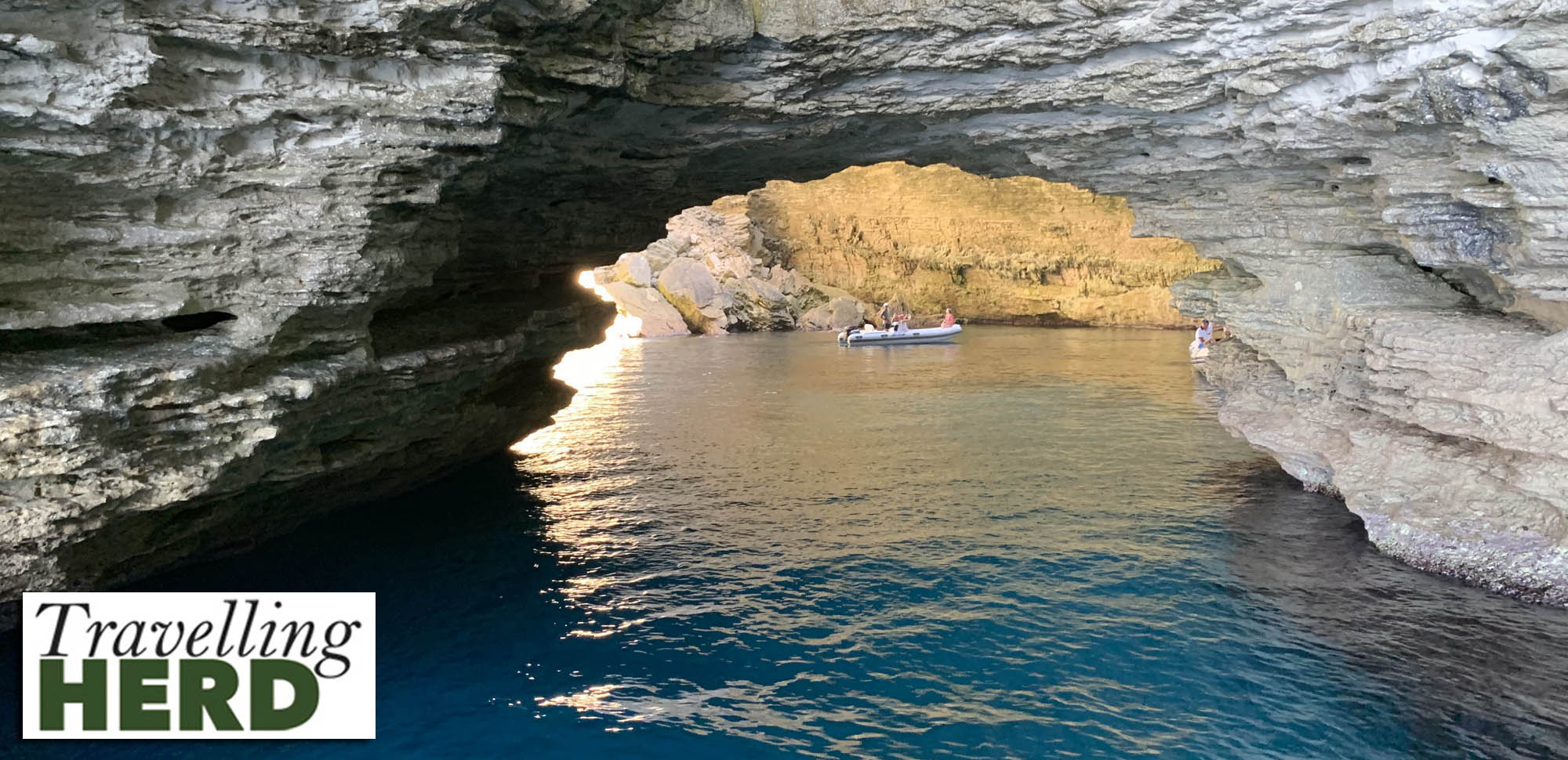
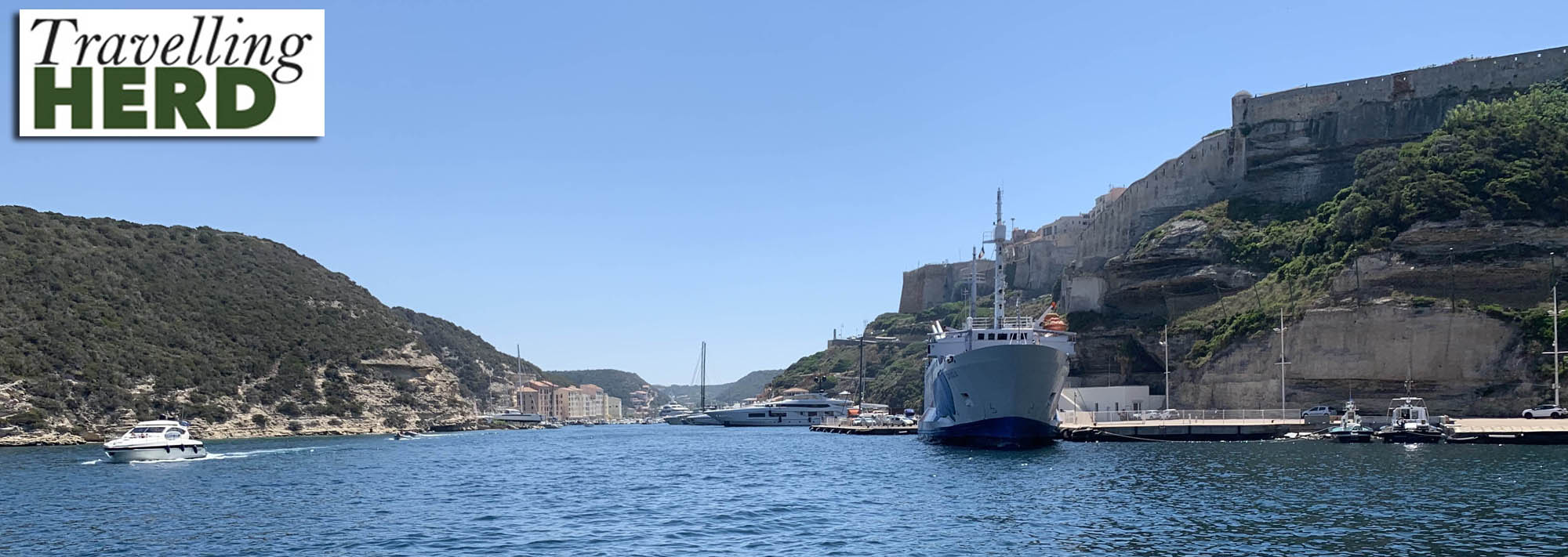
We walked along the marina to our hotel under the steep cliff on which Bonifacio is built. The city is said to be the oldest town in Corsica and was named after Bonifacio, the Marquis of Tuscany who passed by as he was returning from an expedition to Africa in 828. On our arrival, we were delighted to discover that our hotel had two entrances – one at marina level and one, accessed by lift, on level 5 which was that bit higher and therefore closer to the old city. We were less enthusiastic about the receptionist warning us about the noise from the bar below as we checked in and the discovery that complimentary earplugs had been provided.
We were already feeling that we could spend longer in this beautiful medieval city but as we only had one night we tackled the walk up to the Haute Ville, via Montée St-Roch and the Porte de Gênes. We were happily able to circumvent the Montée Rastello by taking the lift to the fifth floor.
We enjoyed the panoramic views from the Montée St-Rochon on the way up.

The Bastion de l’Étendard was the result of modifications to the existing fortifications in the sixteenth century to accommodate the new heavy artillery which was then becoming available.
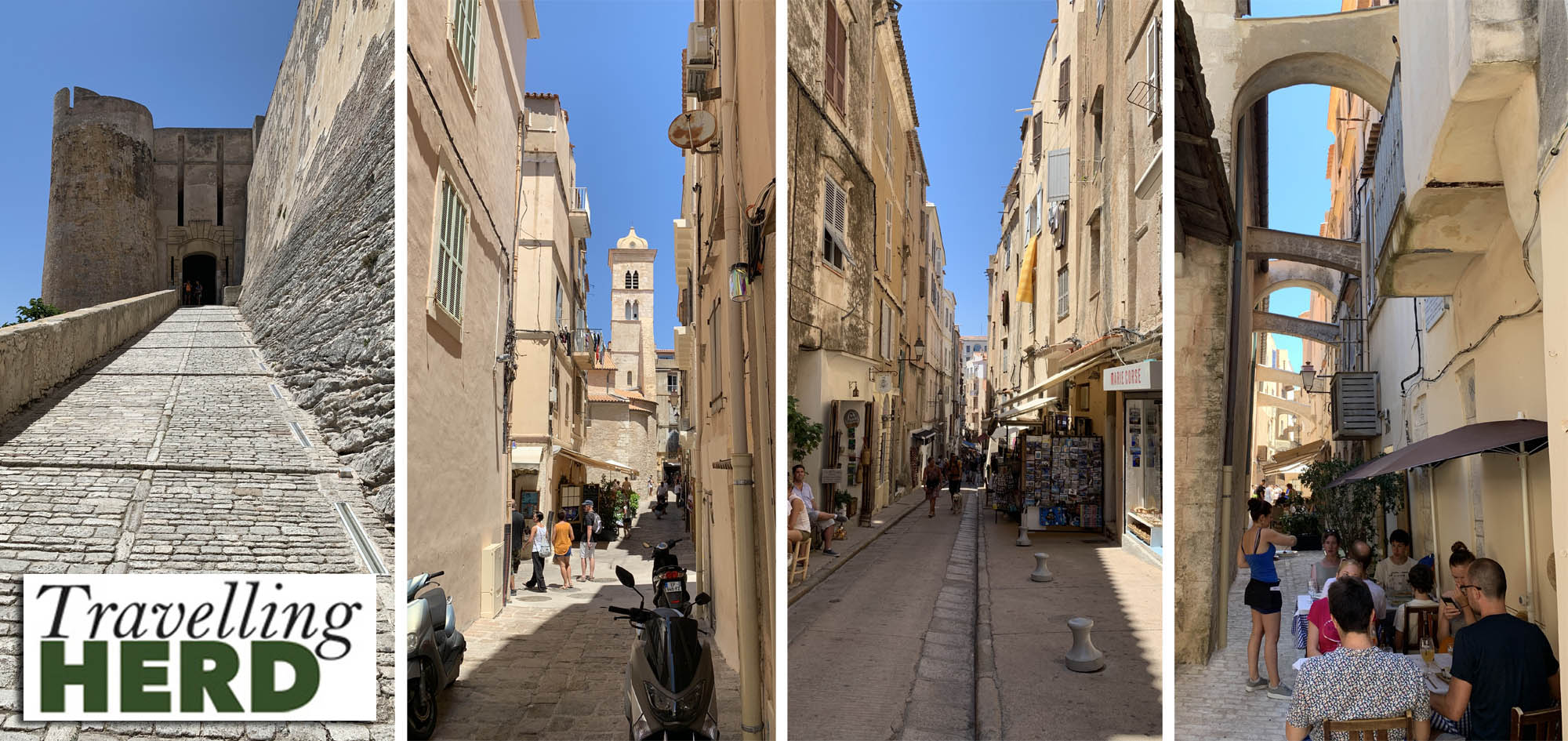
Once in the Haute Ville, buttresses span some of the narrow streets in the old town [above right] and these were originally used to distribute water. The proximity of the buildings in the narrow cobbled streets provides welcome shade.
Sainte-Marie-Majeure, the cathedral, is the oldest building in the Bastion. The loggia at the front was originally used as a meeting point and for administering justice. The interior is a cool, calm contrast to the summer heat and the baroque high altar, which dates from 1624, is beautiful.
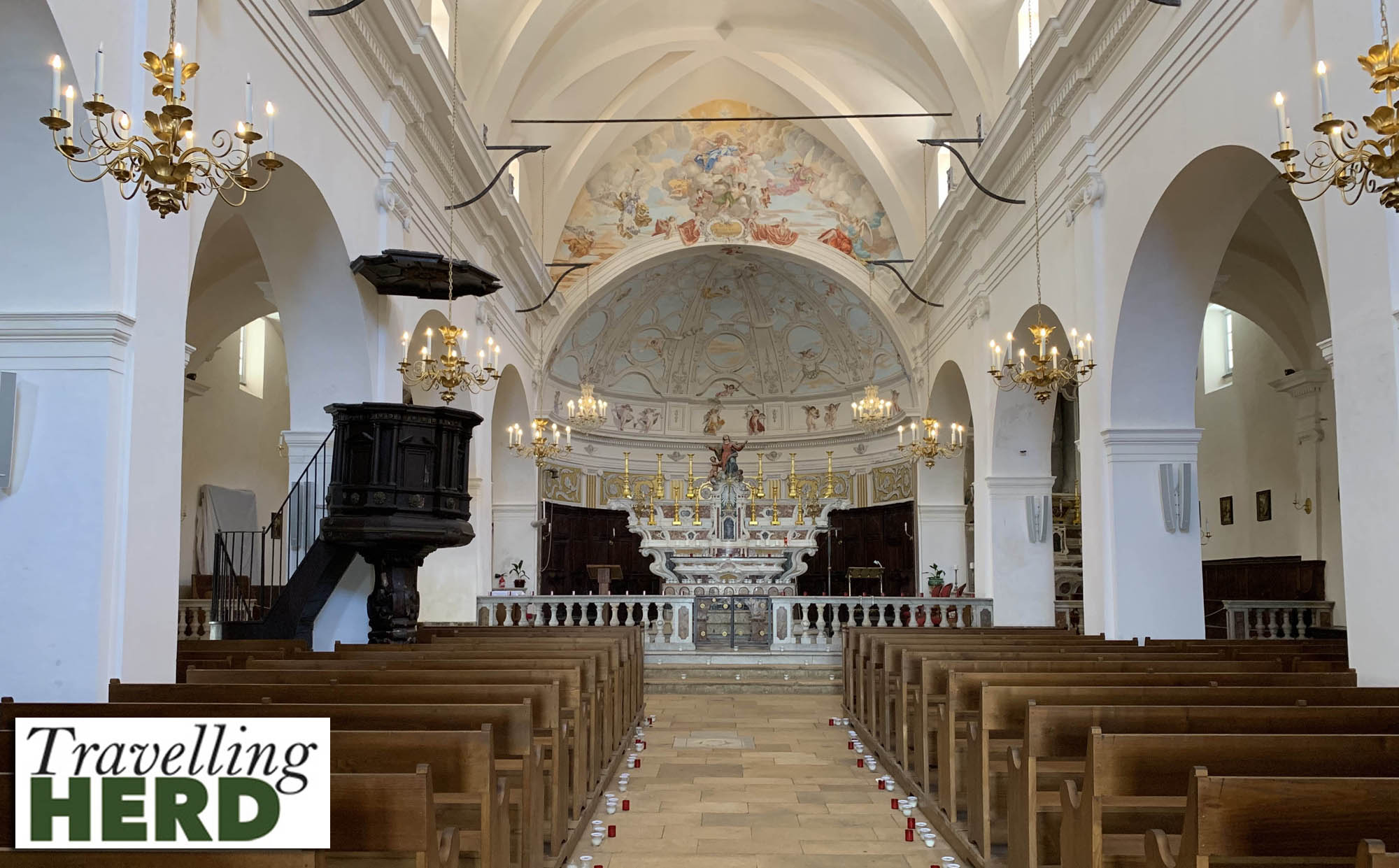
There is also a disused military area with barracks and a church . . .
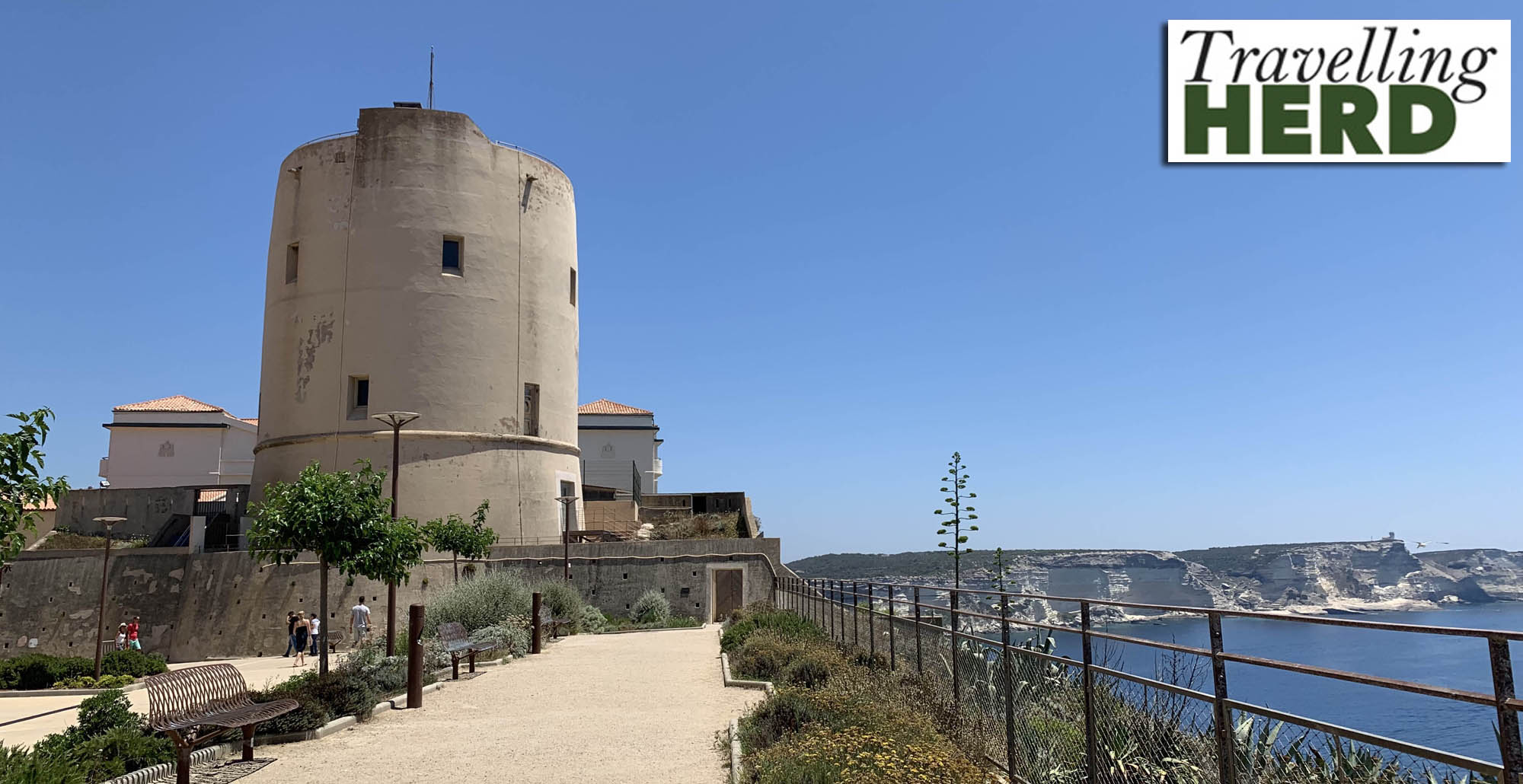
. . . which is being rejuvenated.
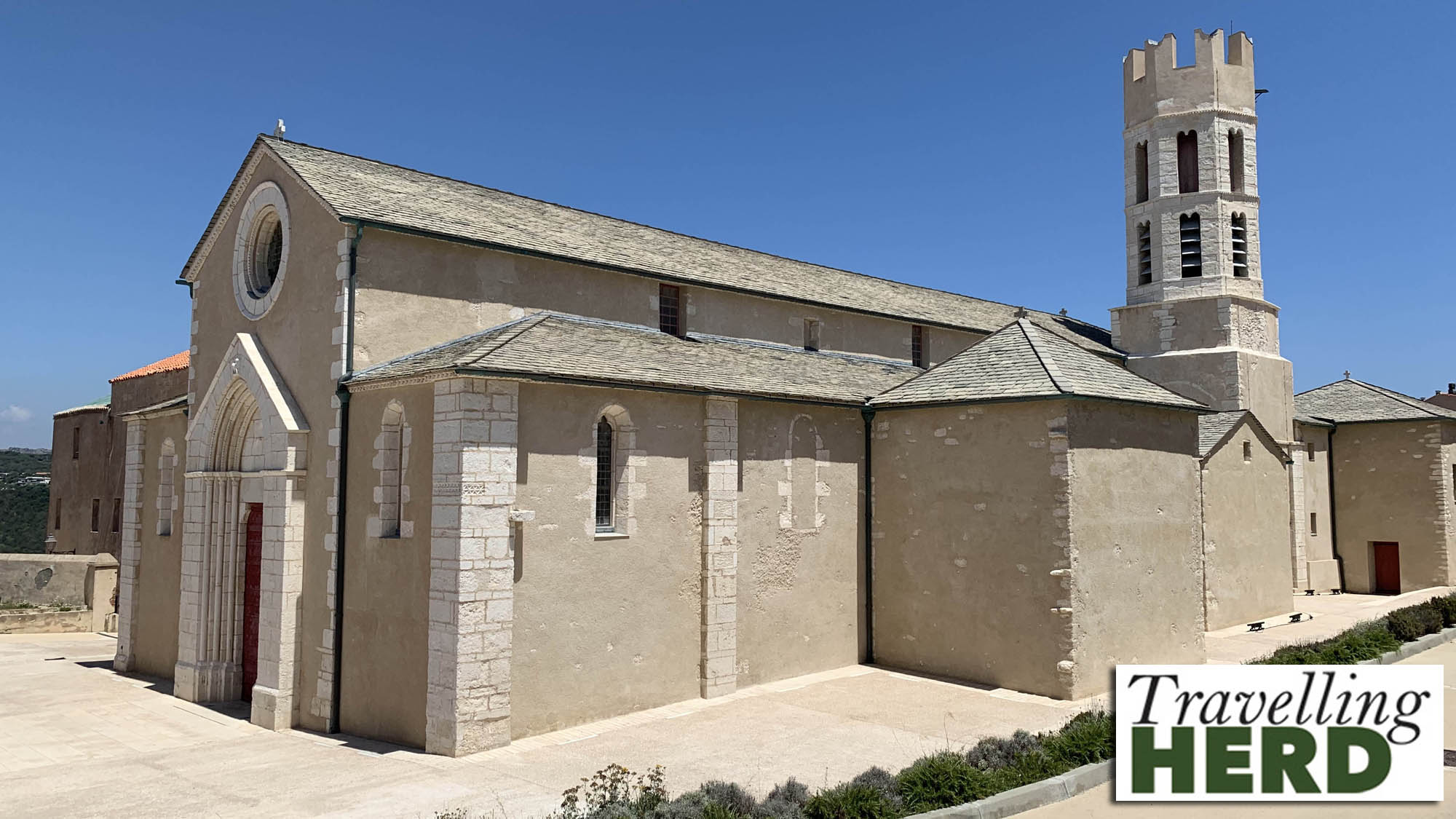
The Cimitiere Marin de Bonifacio, known locally as Santa Campu, is said to be one of the most beautiful graveyards in the Mediterranean. The crypts are almost reminiscent of English beach huts and the site is laid out like a village in miniature.

The white-walled tombs of families such as the Minchettis, Santinis and Lanzadas are testament to the riches of past dynasties and make the place feel more Italian than French.
Returning to the marina for the evening, we watched an impressive team of harbour masters/pilots in their branded red polo shirts directing and in some cases manoeuvring the yachts and boats to appropriate mooring places. This form of entertainment is timeless and is best enjoyed over a chilled beer.
Route Map:
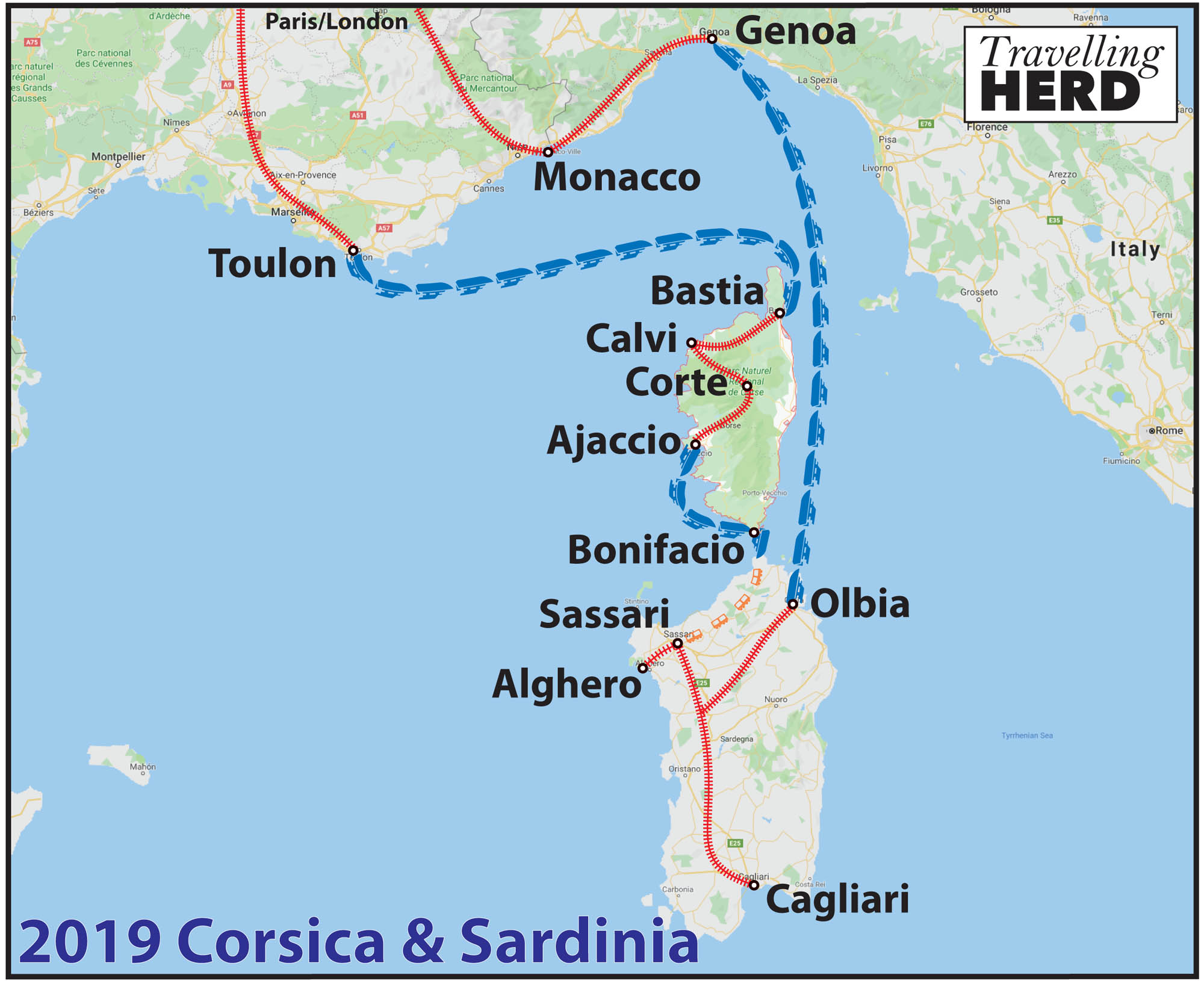
Video of the day:
Selfie of the day:

Dish of the day:




